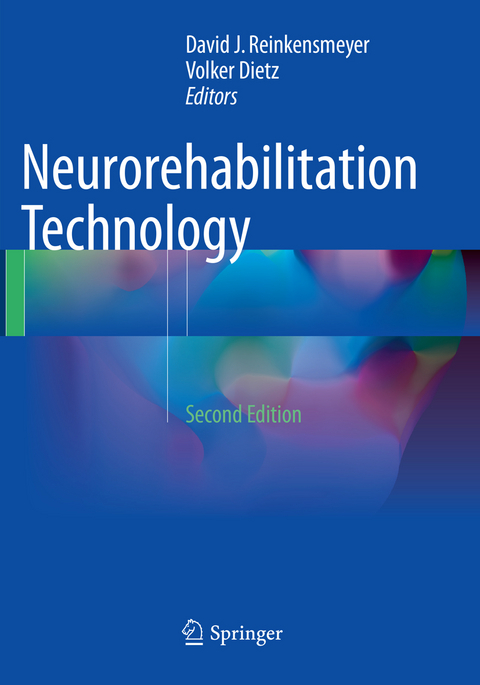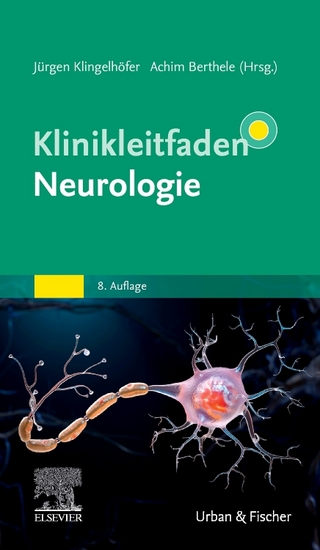
Neurorehabilitation Technology
Springer International Publishing (Verlag)
978-3-319-80386-9 (ISBN)
This revised, updated second edition provides an accessible, practical overview of major areas of technical development and clinical application in the field of neurorehabilitation movement therapy. The initial section provides a rationale for technology application in movement therapy by summarizing recent findings in neuroplasticity and motor learning. The following section then explains the state of the art in human-machine interaction requirements for clinical rehabilitation practice. Subsequent sections describe the ongoing revolution in robotic therapy for upper extremity movement and for walking, and then describe other emerging technologies including electrical stimulation, virtual reality, wearable sensors, and brain-computer interfaces. The promises and limitations of these technologies in neurorehabilitation are discussed. Throughout the book the chapters provide detailed practical information on state-of-the-art clinical applications of these devices following stroke, spinal cord injury, and other neurologic disorders. The text is illustrated throughout with photographs and schematic diagrams which serve to clarify the information for the reader.
Neurorehabilitation Technology, Second Edition is a valuable resource for neurologists, biomedical engineers, roboticists, rehabilitation specialists, physiotherapists, occupational therapists and those training in these fields.
David J. Reinkensmeyer David Reinkensmeyer is Professor in the Departments of Mechanical and Aerospace Engineering, Anatomy and Neurobiology, Biomedical Engineering, and Physical Medicine and Rehabilitation at the University of California Irvine. His research interests are in neuromuscular control, motor learning, robotics, and rehabilitation. A major goal of his research is to develop physically interacting, robotic and mechatronic devices to help the nervous system recover the ability to control movement of the arm, hand, and leg after neurologic injuries such as stroke and spinal cord injury. He is also investigating the computational mechanisms of human motor learning in order to provide a rational basis for designing movement training devices. He is Editor-in-Chief of the Journal of Neuroengineering and Rehabilitation. His laboratory has helped develop a variety of robotic devices for manipulating and measuring movement in humans and rodents, including two devices that have been successfully commercialized as Flint Rehabilitation's MusicGlove and as Hocoma's ArmeoSpring.
Introduction: Rationale for Machine Use.- Part I Basic Framework: Motor Recovery, Learning, and Neural Impairment.- Learning in the Damaged Brain/Spinal Cord: Neuroplasticity.- Movement Neuroscience Foundations of Neurorehabilitation.- Designing Robots That Challenge to Optimize Motor Learning.- Multisystem Neurorehabilitation in Rodents with Spinal Cord Injury.- Sensory-Motor Interactions and Error Augmentation.- Normal and Impaired Cooperative Hand Movements: Role of Neural Coupling.- Clinical Assessment and Rehabilitation of the Upper Limb Following Cervical Spinal Cord Injury.- Part II Human-Machine Interaction in Rehabilitation Practice.- Application Issues for Robotics.- The Human in the Loop.- Robotic and wearable sensor technologies for measurements/clinical assessments.- Clinical Aspects for the Application of Robotics in Neurorehabilitation.- Clinical Application of Robotics and Technology in Restoration of Walking.- Standards and Safety Aspects forMedical Devices in the Field of Neurorehabilitation.- Clinical Application of Rehabilitation Technologies in Children and Youths Undergoing Neurorehabilitation.- Part III Robots for Upper Extremity Recovery.- Restoration of Hand Function in Stroke and Spinal Cord Injury.- Forging Mens et Manus: the MIT Experience in Upper Extremity Robotic Therapy.- Three-Dimensional Multi-Degree-of-Freedom Arm Therapy Robot (ARMin).- Implementation of Impairment Based Neuro-Rehabilitation Devices and Technologies following Brain Injury.- Part IV Robotics for Locomotion Recovery.- Technology of the Robotic Gait Orthosis Lokomat.- Beyond Human or Robot Administered Treadmill Training.- Toward Flexible Assistance for Locomotor Training: Design and Clinical Testing of a Cable-Driven Robot for Stroke, Spinal Cord Injury, and Cerebral Palsy.- Robot-Aided Gait Training with LOPES.- Robotic Devices for Overground Gait and Balance Training.- Using Robotic Exoskeletons for Overground Locomotor Training.- Functional Electrical Stimulation Therapy: Recovery of Function Following Spinal Cord Injury and Stroke.- Passive Devices for Upper Limb Training.- Upper-Extremity Therapy with Spring Orthoses.- Virtual Reality for Sensorimotor Rehabilitation Post-Stroke: Design Principles and Evidence.- Wearable Sensors for Rehabilitation.- BCI-based Neuroprostheses and Physiotherapies for Stroke Motor Rehabilitation.- Epilogue: What Lies Ahead?
"This well written and comprehensive book reviews fundamental principles and practical applications of technology used in neurorehabilitation. ... This book can be used by engineers, scientists, and rehabilitation clinicians who are interested in obtaining an in-depth understanding of various forms of rehabilitation technology. ... It also represents a step above the first edition, and would be a unique and useful contribution to a rehabilitation library." (Elliot J. Roth, Doody's Book Reviews, April, 2017)
| Erscheint lt. Verlag | 9.6.2018 |
|---|---|
| Zusatzinfo | XXII, 647 p. 117 illus., 88 illus. in color. |
| Verlagsort | Cham |
| Sprache | englisch |
| Maße | 178 x 254 mm |
| Gewicht | 13927 g |
| Themenwelt | Medizin / Pharmazie ► Medizinische Fachgebiete ► Neurologie |
| Schlagworte | Functional Electrical Stimulation • Locomotion • Neurorehabilitation • Neurorehabilitation technology • Posture • rehabilitation psychology • Robotics • spinal cord • Virtual Reality • wearable sensor |
| ISBN-10 | 3-319-80386-7 / 3319803867 |
| ISBN-13 | 978-3-319-80386-9 / 9783319803869 |
| Zustand | Neuware |
| Haben Sie eine Frage zum Produkt? |
aus dem Bereich


